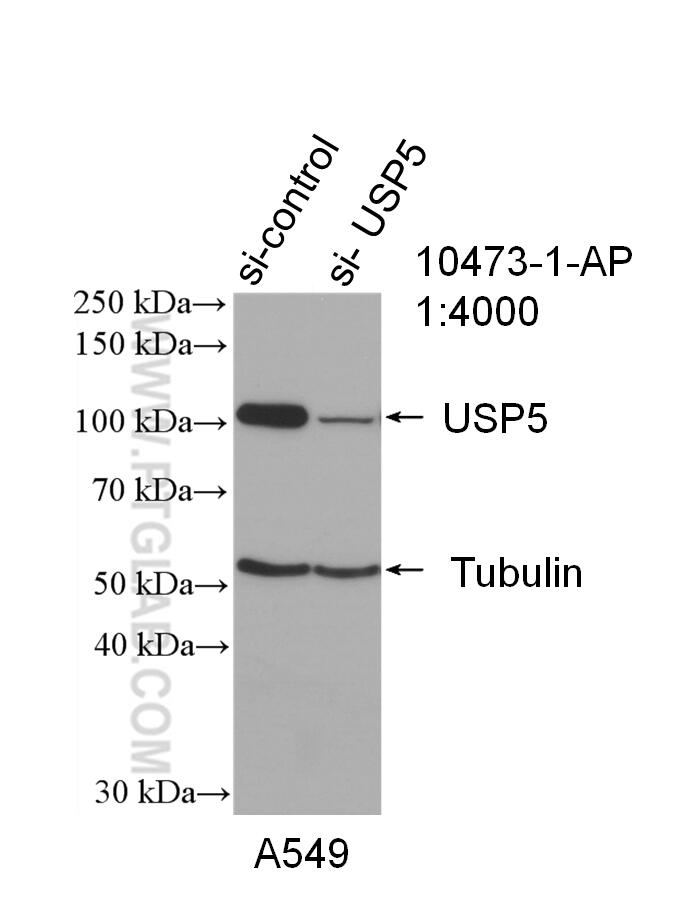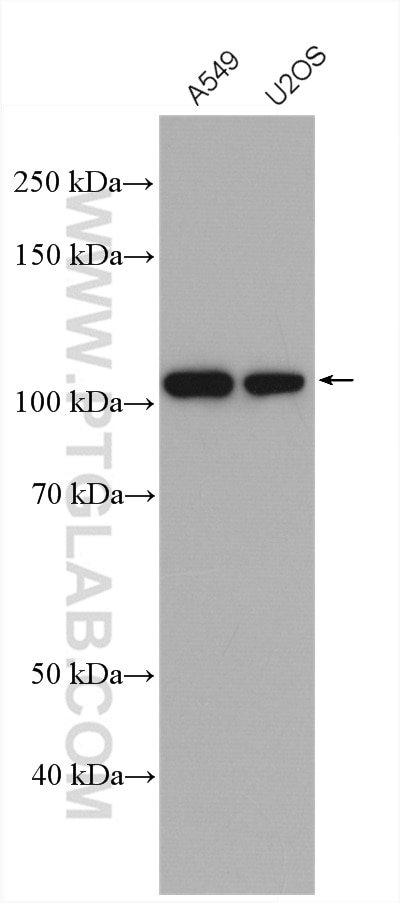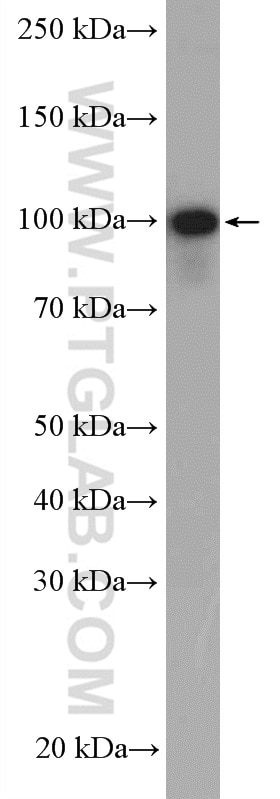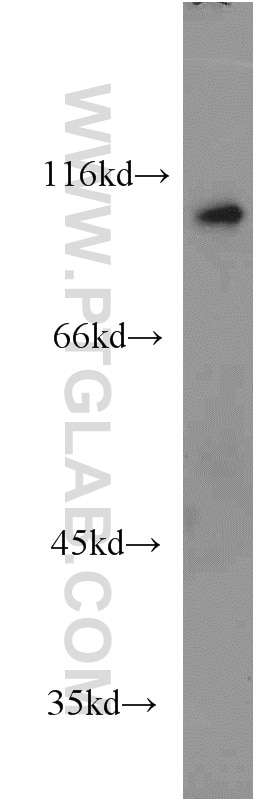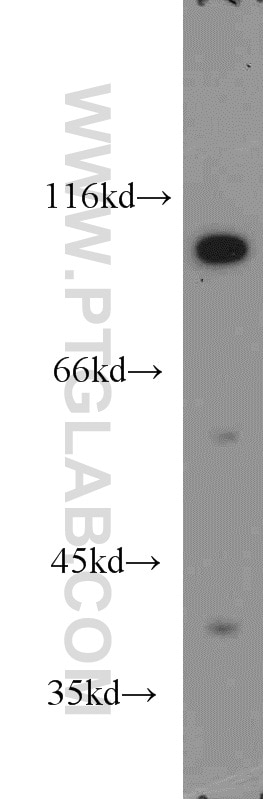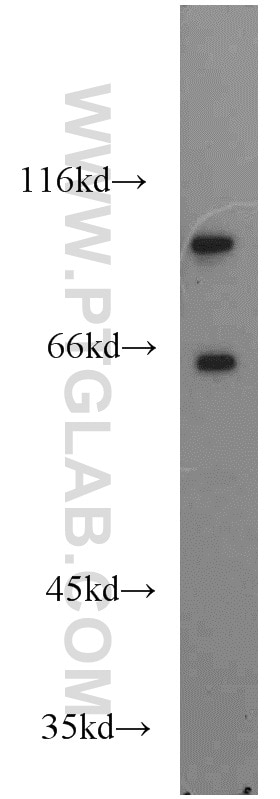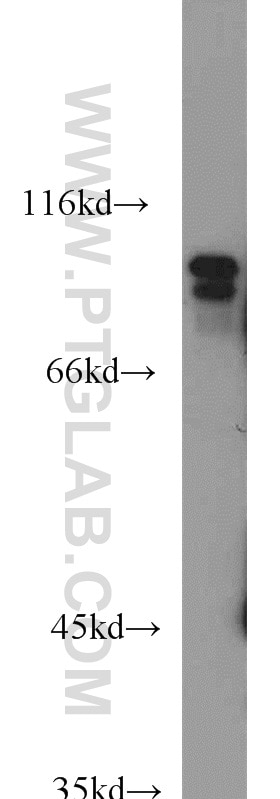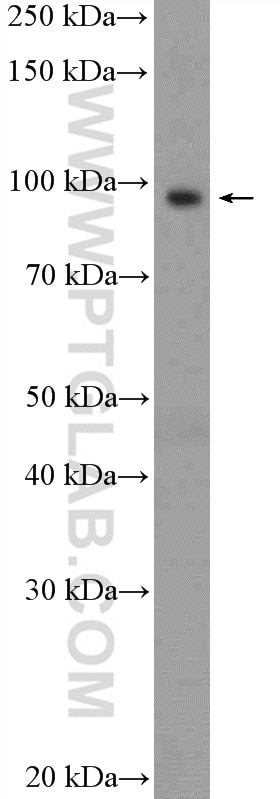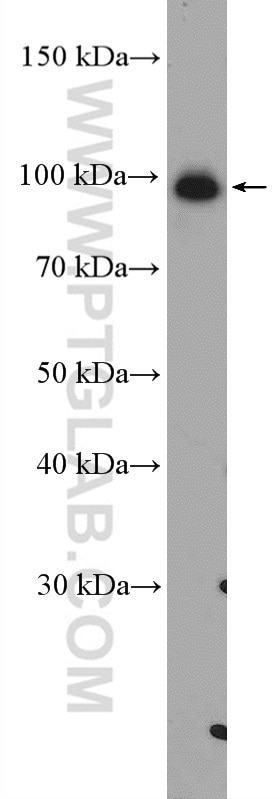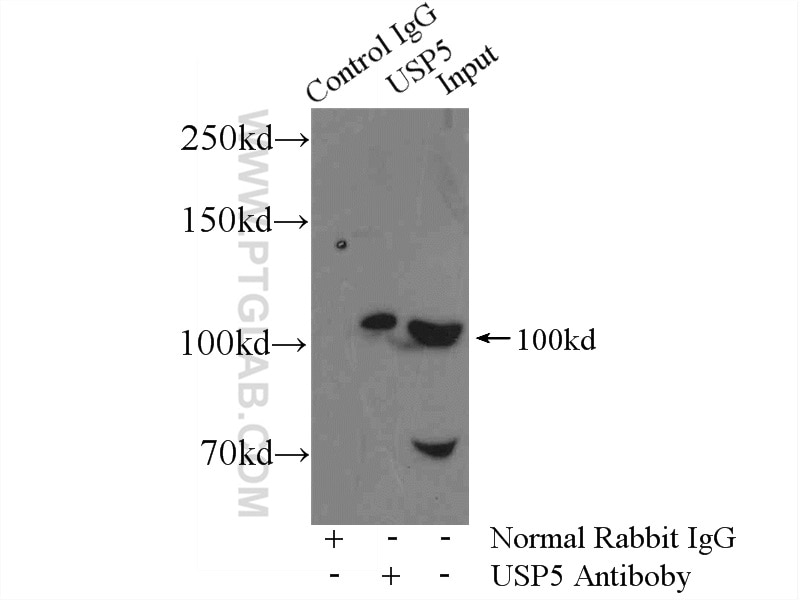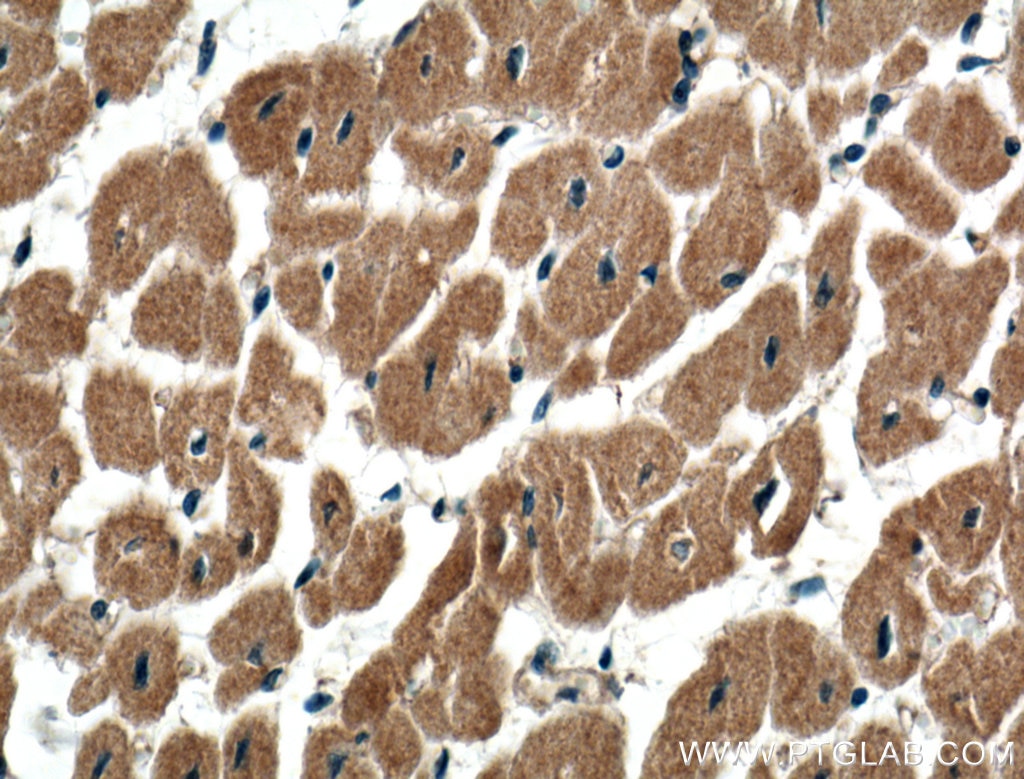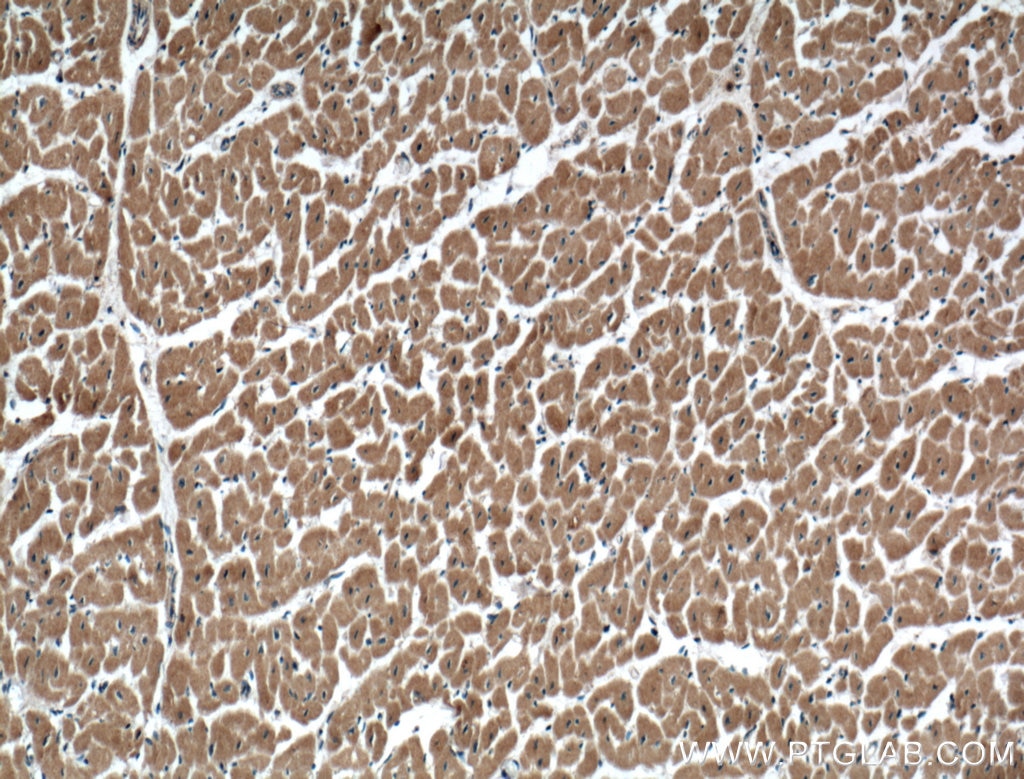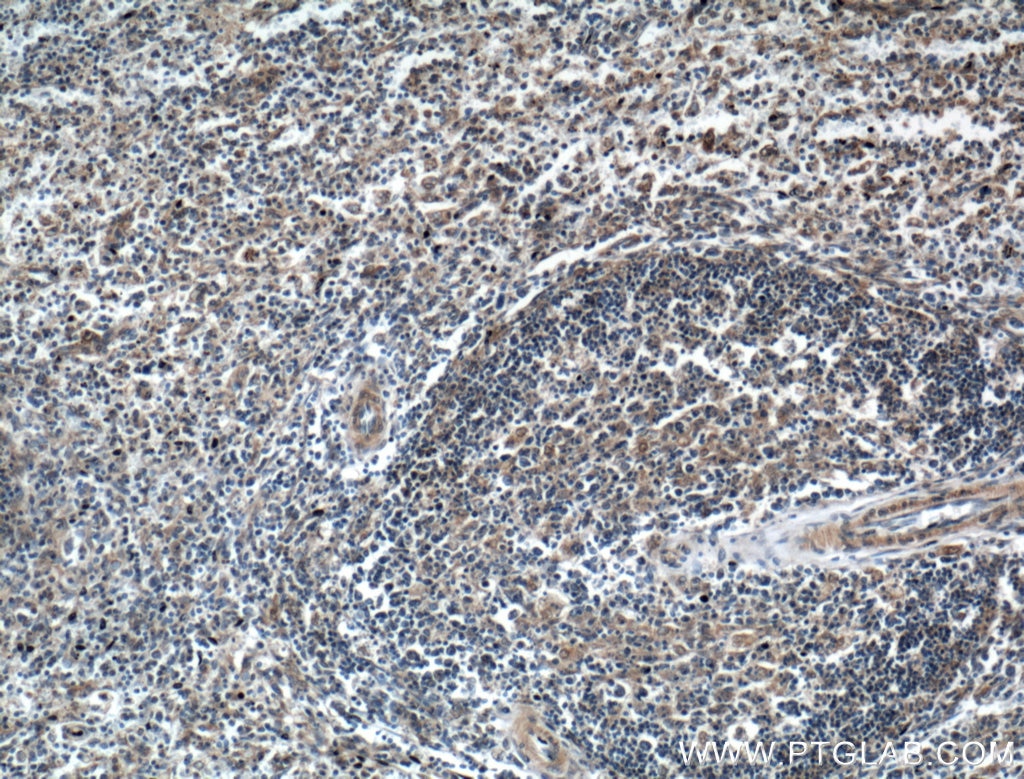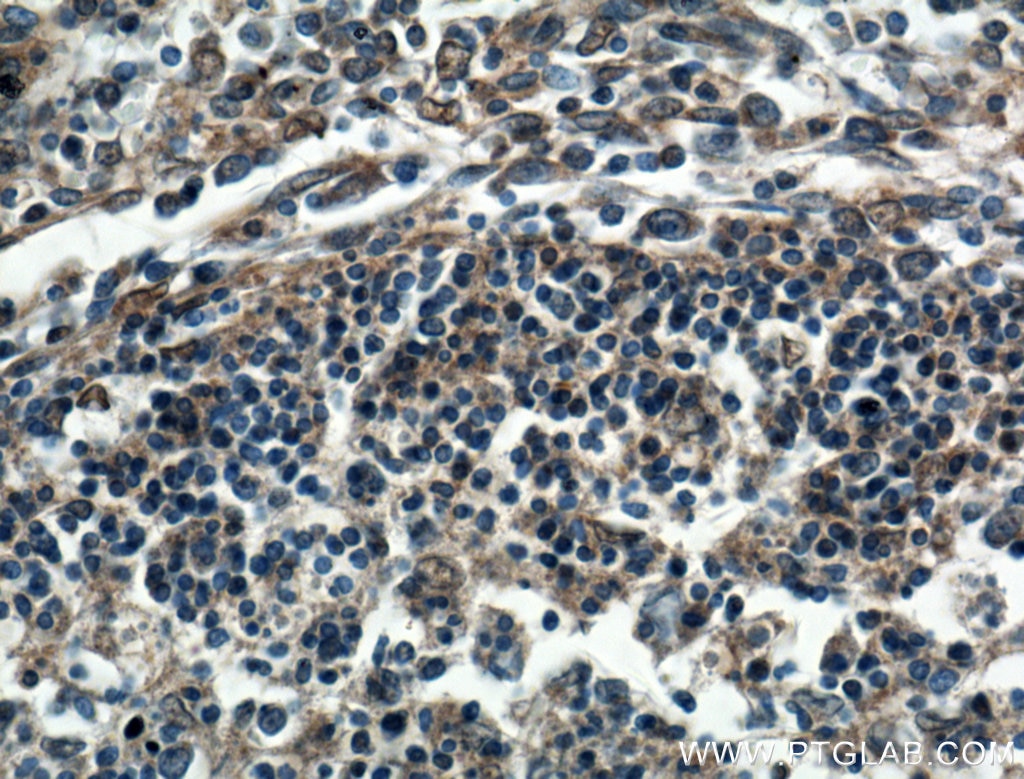- Featured Product
- KD/KO Validated
USP5 Polyclonal antibody
USP5 Polyclonal Antibody for IHC, IP, WB, ELISA
Host / Isotype
Rabbit / IgG
Reactivity
human, mouse, rat and More (1)
Applications
WB, IP, IHC, IF, ELISA
Conjugate
Unconjugated
Cat no : 10473-1-AP
Synonyms
Validation Data Gallery
Tested Applications
| Positive WB detected in | A549 cells, mouse brain tissue, human heart tissue, human colon tissue, U2OS cells, DU 145 cells |
| Positive IP detected in | mouse brain tissue |
| Positive IHC detected in | human heart tissue, human spleen tissue Note: suggested antigen retrieval with TE buffer pH 9.0; (*) Alternatively, antigen retrieval may be performed with citrate buffer pH 6.0 |
Recommended dilution
| Application | Dilution |
|---|---|
| Western Blot (WB) | WB : 1:2000-1:12000 |
| Immunoprecipitation (IP) | IP : 0.5-4.0 ug for 1.0-3.0 mg of total protein lysate |
| Immunohistochemistry (IHC) | IHC : 1:100-1:400 |
| Sample-dependent, check data in validation data gallery | |
Published Applications
| KD/KO | See 12 publications below |
| WB | See 30 publications below |
| IHC | See 5 publications below |
| IF | See 4 publications below |
| IP | See 4 publications below |
| ELISA | See 2 publications below |
| CoIP | See 1 publications below |
Product Information
10473-1-AP targets USP5 in WB, IP, IHC, IF, ELISA applications and shows reactivity with human, mouse, rat samples.
| Tested Reactivity | human, mouse, rat |
| Cited Reactivity | human, rat, mouse, pig |
| Host / Isotype | Rabbit / IgG |
| Class | Polyclonal |
| Type | Antibody |
| Immunogen | USP5 fusion protein Ag0770 相同性解析による交差性が予測される生物種 |
| Full Name | ubiquitin specific peptidase 5 (isopeptidase T) |
| Calculated molecular weight | 96 kDa |
| Observed molecular weight | 95-105 kDa |
| GenBank accession number | BC004889 |
| Gene symbol | USP5 |
| Gene ID (NCBI) | 8078 |
| RRID | AB_2272754 |
| Conjugate | Unconjugated |
| Form | Liquid |
| Purification Method | Antigen affinity purification |
| Storage Buffer | PBS with 0.02% sodium azide and 50% glycerol pH 7.3. |
| Storage Conditions | Store at -20°C. Stable for one year after shipment. Aliquoting is unnecessary for -20oC storage. |
Background Information
USP5, also named as ISOT, belongs to the peptidase C19 family. Knock-down of USP5 causes the accumulation of TP53/p53 and an increase in TP53/p53 transcriptional activity because the unanchored polyubiquitin that accumulates is able to compete with ubiquitinated TP53/p53 but not with MDM2 for proteasomal recognition. USP5 is a potential target for p53 activating therapeutic agents for the treatment of cancer(PMID: 19098288). It is a novel proteasome associated protein(PMID: 19182904). USP5 cleaves linear and branched multiubiquitin polymers with a marked preference for branched polymers. USP5 has 2 isoforms with the molecular mass of 96 kDa and 93 kDa.
Protocols
| Product Specific Protocols | |
|---|---|
| WB protocol for USP5 antibody 10473-1-AP | Download protocol |
| IHC protocol for USP5 antibody 10473-1-AP | Download protocol |
| IP protocol for USP5 antibody 10473-1-AP | Download protocol |
| Standard Protocols | |
|---|---|
| Click here to view our Standard Protocols |
Publications
| Species | Application | Title |
|---|---|---|
Nat Commun STREAMING-tag system reveals spatiotemporal relationships between transcriptional regulatory factors and transcriptional activity | ||
Blood The ubiquitin ligase HERC4 mediates c-Maf ubiquitination and delays the growth of multiple myeloma xenografts in nude mice. | ||
Theranostics Ubiquitin specific peptidase 5 regulates colorectal cancer cell growth by stabilizing Tu translation elongation factor.
| ||
Clin Transl Med MAFG-AS1 promotes tumor progression via regulation of the HuR/PTBP1 axis in bladder urothelial carcinoma.
| ||
Acta Pharmacol Sin Mebendazole elicits potent antimyeloma activity by inhibiting the USP5/c-Maf axis. | ||
Sci Signal Selective inhibition of CaV3.2 channels reverses hyperexcitability of peripheral nociceptors and alleviates postsurgical pain. |
